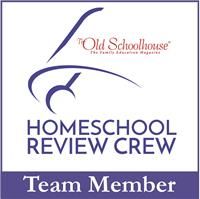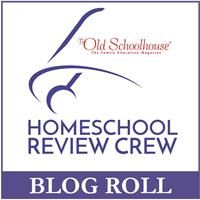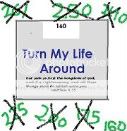Thanks to the Homeschool Review Crew, Harold and Hannah have had the opportunity to work on improving their math-fact fluency and their cursive handwriting with resources from Page a Day Math.
Page a Day Math offers both physical kits and downloadable digital kits. All of the materials we received were downloadable files, though some of my fellow Crew Mates were able to review physical kits. As I decided to work on multiplication with the children first, I chose the Multiplication Starter Kit. But, I also want to move into division, so I chose the Division Starter Kit as well. These kits each include 12 books, each with 14 days worth of work. Also included are bonuses. There are flashcards, assessment pages, a progress chart, and two cursive handwriting books in each kit.
You can also purchase digital flashcards and assessments separately, so I decided to get the flashcards and assessments for addition and subtraction. I figured we could use them for assessing their knowledge and allowing them to practice their math facts.
What I was really interested in was the opportunity for the children to start working more consistently on their cursive writing. The Multiplication Starter Kit came with I Can Write in Cursive and Beautiful Biology! Cursive Practice, and The Division Starter Kit came with Adorable Adjectives! Cursive Practice and Eats and Treats! Cursive Practice. We were also able to choose any of the other handwriting books we were interested in. So, I chose Scenic States (seeing as we have been learning about American history), Fun Physics, and Cool Chemistry.
Each of the math books in the kit follows the same format. Each one focuses on the math facts of one number, and each book spans the facts from 0 times the number to 12 times the number, with a final page for review. Each day the child will work on one number's facts on the first page, and review what was already learned on the second page. Technically the pages are front and back, thus the "page a day" name. Of course, that is with the physical book.
Front:
Back:
As you can see, these books are going to be supplemental to your math curriculum. They don't teach what multiplication and division are, they just allow a child to practice their facts, while working on their handwriting. And the color-coded flashcards offer even more practice.
The flashcards need to be printed out, preferable in color and on sturdy cardstock, cut, and folded. After giving the children the first two math assessment pages, I discovered they both needed to start with their facts for 3 and 4. So, I gave them the flashcards and the workbook pages.
They have actually been spending more time with the cursive handwriting book. I had them start with I Can Write in Cursive, so they could learn all the letters.
For each letter the child needs to trace a couple of rows of capitals and a couple of rows of lowercase, and then a few upper and lower case pairs.
I actually had the children work on these a little differently, as I wanted us to get through the alphabet and start working on joining the letters into words.
I gave them three letters a day. They were to do two full lines of each letter, one uppercase, the other lowercase. Then, on the following day, they were given the next three letters. They were to do one uppercase and one lowercase letter (not row, just a single letter) for each of the previous letters practiced, and the full rows of the new letters. In this way, the children have made their way through the alphabet and have started on words.
Here's a look at a page from the Eats and Treats! Cursive Practice book.
One thing I would have prefered to have had in these books is blank lined pages for the children to practice on. I did have my own to print out, but I found it a bit weird that this program only has children tracing, and doesn't leave room for any free-hand practice on the page.
So, I had the children trace one word, write it a couple of times on lined paper, and bring it to me to check. Then they re-traced the word, and practiced again. If there were any letters they were struggling with, I showed them an example and had them practice the letter, without tracing it.
Younger children will appreciate the cute Math Squad doggies found throughout the book. In the math books there is a picture of one of them on each page, cheering the child along. And they all join together on the certificate at the back of the book.
In the I Can Write in Cursive book, the Math Squad reminds the child what sound the letter makes when they encourage them to color the picture that starts with the sound.
And in the themed handwriting books, they ask questions in relation to the words on the page.
Here's a sample from Beautiful Biology:
Harold really loves these books, especially the handwriting. He says those are his favorite. Hannah isn't a huge fan, though she couldn't really give me a reason. I'm wondering if she thinks they are a bit childish for her, seeing as she is in fourth grade. However, I appreciate that she has a way to practice her math facts and her handwriting. Maybe the fact that she needs to write the numbers over and over will help her not to write certain numbers backwards anymore.
These are cute little workbooks to help your early elementary child(ren) work on math fluency and handwriting. I think they could be a great addition to your homeschool. And the digital books are awesome because you can print the pages out over and over for more practice if necessary.
You can find Page a Day Math on Facebook, Instagram, Pinterest, and YouTube.
These are cute little workbooks to help your early elementary child(ren) work on math fluency and handwriting. I think they could be a great addition to your homeschool. And the digital books are awesome because you can print the pages out over and over for more practice if necessary.
You can find Page a Day Math on Facebook, Instagram, Pinterest, and YouTube.
Don't forget to click on the banner below to see what my fellow Crew Mates had to say about Page a Day Math.


























































![[PREMIO2009.png]](https://blogger.googleusercontent.com/img/b/R29vZ2xl/AVvXsEjXD_Gx-wZ9EM5hXKrEYLksEBkYfRQtmb8VDVTDG_yyLggQoFIstZsh4zszdG20KqErZicRzEhiNYLty7j3IMXJYsABqkXjr8pp-ncj71xCbpxlXGbGpZq2fTuDQqq1RMKV4DPcDBnBViA/s1600/PREMIO2009.png)



